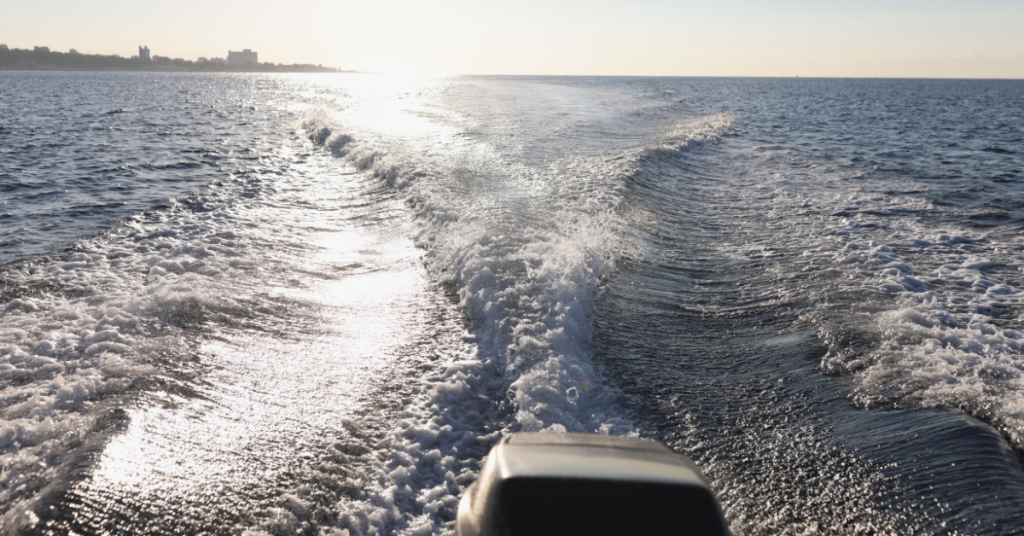Learning how to navigate a boat in rough waters is a valuable skill set that offers numerous benefits to boating enthusiasts. Firstly, mastering the art of handling a boat in challenging conditions enhances overall safety on the water. Understanding how to navigate through waves, strong currents, and adverse weather conditions equips boaters with the expertise needed to respond effectively to unforeseen challenges, reducing the risk of accidents or mishaps. Moreover, the ability to operate a boat proficiently in rough waters expands one’s range of exploration, enabling access to diverse and less crowded waterways that may otherwise be intimidating. This skill set is particularly crucial for sailors and offshore enthusiasts who may encounter unpredictable conditions. To learn how to drive a boat in rough water, continue reading below to learn from one of the top watermaker companies.
Should You Trim Up or Trim Down in Choppy Water?
In choppy water conditions, the decision to trim up or trim down a boat’s outboard or sterndrive is pivotal for ensuring optimal performance, stability, and safety. Generally, when facing choppy or rough waters, it is advisable to trim down the outboard or sterndrive. This involves lowering the engine or drive unit closer to the water. Trimming down enhances the boat’s contact with the water, improving stability, control, and overall handling. This increased contact with the water helps the boat better navigate through waves and rough seas, minimizing the risk of the bow bouncing or losing control. However, the specific trim adjustment may vary based on the boat’s design, hull type, and prevailing water conditions. As a rule of thumb, maintaining a balanced trim that allows the boat to cut through waves smoothly and maintain proper control is crucial for a safer and more comfortable boating experience in choppy waters.

How Do You Handle Rough Water?
Effectively handling a boat in rough water demands a combination of skill, situational awareness, and strategic adjustments. Firstly, it’s crucial to maintain an appropriate speed that allows the boat to cut through waves without excessive pounding. Adopting a balanced trim by adjusting the outboard or sterndrive helps improve stability and control, minimizing the risk of the bow bouncing or losing contact with the water. Additionally, utilizing a proper course, such as angling the boat to face waves at a slight angle rather than directly head-on, can enhance stability and reduce the impact of rough conditions. Maintaining a firm grip on the helm, anticipating wave patterns, and adjusting speed and trim as needed contribute to smoother navigation through choppy waters.
How Do You Drive a Boat Against Waves?
How should a boat be maneuvered when caught in rough water? Navigating a boat against waves requires a nuanced approach to ensure both safety and efficiency in challenging conditions. First and foremost, it’s crucial to approach the waves at a proper angle rather than directly head-on. This angle, known as a “quartering sea” approach, allows the boat to cut through the waves more smoothly, minimizing the impact and providing a more stable ride. Additionally, maintaining a steady and moderate speed is essential to ensure control while preventing the boat from slamming into the oncoming waves. Adjusting the trim of the outboard or sterndrive is another key consideration; trimming down enhances the boat’s contact with the water, improving stability and minimizing the risk of the bow bouncing. Skillful maneuvering, anticipation of wave patterns, and proper weight distribution within the boat all contribute to safer and more controlled navigation when driving against waves in rough water.
More About ECHOTec Watermakers
ECHOTec Watermakers is a dedicated desalination manufacturer that is here to help boaters and people living off the grid with their desalination needs. Whether it is how to drive a boat in rough water or other marine-related topics, we are here to help. Contact our professionals today to learn more.


